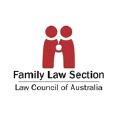
Resource Hub – Articles/Blog
Who has to pay child support?
Both parents of the child are liable to pay child support. Biological parents, adoptive parents and IVF parents all have a liability.
Who has a duty to support children?
Each parent has a duty to financially support their child. This duty exists, regardless of whether the parents were in a relationship and it is not relevant whether a parent spends time with their child or not.
The duty of a parent to support a child takes priority over other commitments held by parents to maintain themselves or any other person they have a duty to maintain. Upon finalisation of any Court Orders, the person applying for them must inform the Child Support Agency of any Orders made or agreements reached. A copy of the Orders or agreements must also be provided to the Child Support Agency.
The term ‘parent’ includes biological parents, adoptive parents and people who have become parents as a result of an artificial conception procedure.
Whether a parent is liable to pay child support will depend on their circumstances. A parent who has the care of a child for at least part of the time and who is not living with the other parent can apply for child support. The amount of time a parent spends with their child, can affect the amounts paid. Parents can apply for Court Orders to spend time with their child. In some circumstances another eligible person who has care of a child can apply for Child Support.
In order to receive Child Support, a parent or eligible carer needs to show they have at least shared care of the child and the other person is the natural or adoptive parent.
Where parents can agree, the Child Support Agency does not have to be involved. Agreements should be signed and in writing and can be registered with the Child Support Agency.
Some parents may prefer for the Child Support Agency to work out the amount to be paid, but the amounts can be transferred privately. Receipts for private payments made or received and should be retained.
How is child support calculated?
Both parents are responsible for financially supporting or maintaining their children. The laws covering child support are the Child Support (Registration and Collection) Act, 1988 and the Child Support (Assessment) Act, 1989.

Child support – how much is paid by each parent for the needs of the child – is calculated by looking at each parent’s income, each parent’s expenses and the amount of care each parent provides. First each parent’s “child support income” is considered. This is the parent’s taxable income, minus what he or she needs to support him or herself. So if a mom makes $35,000 a year and needs $20,000 to live on, her child support income is $15,000. These two incomes are then added together to determine how much total child support is available from both parents combined.
Each parent’s individual child support income is divided by the total child support amount to figure out what percentage of each parent’s income should go to child support. This is called the “income percentage”.
Then child care is taken into consideration. The parent taking greater care of the child is making a financial contribution that is also recognized and that parent is entitled to pay less child support. This is called the “care percentage” and it’s based on the number of nights a child spends with each parent. This is used to determine how much that care costs in actual dollar terms. The Department of Human Services has a fixed chart to make this determination. This number, which is a percentage, is called the “cost percentage”. This cost percentage for each parent is then subtracted from each parent’s income percentage. If the number is negative, this indicates they are providing most of the child care and they do not need to pay child support. If the number is positive, this is the parent who will pay child support.
The next step is to figure out the actual cost for each child, which is based on the parent’s combined child support income, the number of children and their ages. There is a fixed chart that is updated each year.
The final amount to be paid is calculated by multiplying the child support percentage (of the parent with the positive percentage) by the costs of the child.
The Child Support Agency provides a clear, thorough example to demonstrate exactly how the process works, brought below.
M and F have three children, A aged 9, B aged 7, and C aged 5, who live mostly with M. The children spend 75 nights a year with F, who has regular care of the children. M has an adjusted taxable income of $30 000 and F has an adjusted taxable income of $50,000.
Step 1:
Work out each parent’s child support income by deducting the self-support amount of $18,252 from their adjusted taxable income.
M has a child support income of $11,748 ($30,000 less $18,252)
F has a child support income of $31,748 ($50,000 less $18,252)
Step 2:
Work out the parents’ combined child support income.
$11,748 + $31,748 = $43,496
Step 3:
Work out each parent’s income percentage.
M = $11,748 ÷ $43,496 x 100 = 27.01%
F = $31,748 ÷ $43,496 x 100 = 72.99%
Step 4:
Work out each parent’s percentage of care for each child.
M has care of all the children for 290 nights, 79.45% of the nights, rounded to a care percentage of 80%.
F has care of all the children for 75 nights, 20.55% of the nights, rounded to a care percentage of 20%.
Step 5:
Work out each parent’s cost percentage for each child by looking up the table in section 55C.
M has a cost percentage of 76%
F has a cost percentage of 24%
(Note: a percentage of care is calculated for each child. As the care arrangements for these children are the same, the percentage is the same for all the children. If there are different care arrangements for different children, then they will have different percentages of care).
Step 6:
Work out each parent’s child support percentage for each child by subtracting their cost percentage for that child from their income percentage. As the care arrangements are the same for all the children we will show the one percent that is used for all the children.
M = 27.01% – 76% = -48.99%
F = 72.99% – 24% = 48.99%
(This means that F is responsible for 72.99% of the children’s costs because they have 72.99% of the combined child support income. As F meets only 24% of the costs through the care they need to transfer 48.99% of the costs to M through child support.)
Step 7:
Work out the costs for each child.
The combined child support income is $43,496.
From the 2012 Costs of Children Table the total costs of the children (three children 12 or under) =
$8,757 + ($0.26 for every $ over $32,433)
$8,757 + ($43,496 – $32,433 = $11,063 x $0.26 = $2,876)
Therefore: $8,757 + $2,876 = $11,633
The cost of each child = $11,633 ÷ 3 = $3,878
Step 8:
Work out the annual rate of child support payable by the parent with a positive child support percentage.
48.99% x $3,878 = $1,900
$1,900 x 3 (children) = $5,700
F is liable to pay M child support of $5,700 (annual rate).
(From “The Guide”, the CSA’s online guide)
How is child support calculated?
A formula is used. The formula incorporates the obligation of both parents to contribute to their children to the extent that they are able to do so. The results of research on the costs of raising children are also included. For a detailed explanation of how child support is calculated in Australia, please read our extensive article on Australian child support calculations.
How is child support collected?
Parents can make their own private arrangements for the payment of child support if they can agree. However, private collection is only recommended in cases where the payer is likely to pay or has a good payment history. Private collection of a child support formula assessment can affect FTB(A) entitlements.
A payee can request payment liability is enforced by the CSA. The Child Support Agency can collect periodic payments of child support or maintenance payable under a child support assessment, a child support agreement or a court order. The Agency has broad powers to collect child support debts including collecting from wages, intercepting tax refunds and collecting money from bank accounts. If payments are not made on time and in full, late payment penalties can be charged.
How much child support will I owe?
How much child support will I owe? Transcript

Hi. I’m Vanessa Mathews from Mathews Family Law & Mediation Specialists and I’m going to talk with you today about child support in Australia. While I can give you the basics about child support in Australia, I would stress that you contact a lawyer and get professional legal advice. Every family and every case is different.
Child support is the amount of money the non-custodial parent, meaning the parent the children don’t live with, must pay to the other parent in order to help support the children financially.
You and your partner may come up with your own child support agreement. If you do this, there are a few important pieces of information that your agreement should include. The agreement should say how much money one parent will pay to the other. The agreement should explain what the money is for, for example, generally, monthly payments are for food, clothing and housing.
But what about special expenses like private school fees or orthodontics? A good agreement should include who pays for those unexpected expenses or since you can’t always know what these will be, how you’ll decide who pays. You can agree that when an unexpected expense arises, you’ll go to a mediator, or a third party who knows you both well and let them decide how the new expense will be paid.
You should also include in the agreement how the monthly payments will be paid. Do you want to make a bank transfer? Cash or a check? And it’s also important to state when the payments will be made. At the end of each month, at the beginning of the next month. If you work out this arrangement ahead of time, you can avoid a lot of headaches and fights.
When deciding what needs to be paid for, you should also think about putting money away for your children for the future. This is especially important because once your child turns 18, the law doesn’t require you to support them anymore. Some parents continue to help out their adult children. While you may want to help them, your ex-partner may not want to and he or she does not have to do so. One way of ensuring that they’re not left out in the cold at that point is to include savings for them in the child support agreement.
I would add that there are different types of agreements you can make, so be sure to read the section on child support on our website at MathewsFamilyLaw.com.au.
Sometimes parents can’t come to an agreement on their own. In this case, the child support Melbourne agency will decide how much you need to pay. This is called the Child Support’s fee and it’s a mathematical equation that determines how much a parent must pay. The calculation is based on how much you earn, how many children you have, how much time you spend with them, whether or not you have children from another relationship, and how much you the parent need for yourself.
So, while a parent in one family may need to pay $500 a month for 2 children, another parent in another family may need to pay $1500 a month for 2 children. The Child Support agency’s responsible for assessing the amount a parent has to pay, collecting it, and distributing it to the other parent.
People often ask me what happens if a parent doesn’t pay. The law has a few ways of dealing with these parents. One is to garnish their wages. This means the money they owe for child support is taken directly out of the parent’s salary. Money can also be collected straight from the parent’s bank account. A parent may also be prohibited from traveling overseas for not paying child support and in extreme cases, go to jail.
Child support can be complicated and very emotional. It’s best to seek out professional legal help to work through various issues and come up with a plan that is fair to everyone, especially the children. Please look at our child support calculator on our website. I’m Vanessa, Mathews from Mathews Family Law & Mediation Specialists.
How much child support will I receive or have to pay and for how long?
The Child Support Agency (CSA) calculates the amount of child support. The calculation used by the CSA considers parents’ incomes, the percentage of care each parent has and the cost of living.
Child Support is ordinarily payable until the youngest child is 18 years of age. If the child is at school in the year they turn 18, payments continue until the end of the school year.
Child Support Enforcement and Collection
1988 Changes
Australia has come a long way when it comes to child support enforcement. In 1988, less than 30% of child maintenance was paid, and in response, Australia passed the Child Support (Registration and Collection) Act. This required child support obligations to be registered, and thus become a debt to the Commonwealth. Prior to making this change, child support collection was a major issue for many Australians.

The legislation was passed in hopes of ensuring that children receive child support on a regular and timely basis. Fortunately, since the Act was passed non-payment issues have decreased significantly.
Registration
Child support, child maintenance, and spousal maintenance may all be registered for collection. Once registered, and the details entered into the child support register, the Child Support Agency (CSA) may enforce payment. When payment is not timely, the CSA reserves the right to impose penalties, which are retained by the CSA and not given to the payee.
This registration process is how the liability becomes a debt to the Commonwealth, and thus enforceable by the CSA. The CSA can enforce child support using the traditional court enforcement process.
Enforcement
A payee may enforce child support payments even if the debt has been registered for collection. As long as the payee notifies the Registrar in writing, 14 days before instituting the proceeding, the payee may sue and recover the debt due. A shorter notice period may be appropriate if there are exceptional circumstances.
Alternatively, the CSA may use the Federal Magistrates Court to enforce child support payments. Under these proceedings the court is not permitted to vary the child support liability or remit any penalties, the proceedings are strictly intended to be enforcement summons. The court is charged with the task of making an inquiry into the financial circumstances of the payer, and subsequently assessing his or her ability to pay the arrears.
Once the debt has been proved, the court may enforce the payment through a variety of methods, including garnishment, seizure of property, sequestration of the estate, sale of an interest in real property, or any other method necessary.
Collection Methods
The CSA has several methods it may use to enforce the collection of child support payments. They are as follows.
- Auto-withholding. Under this method, payments owed are deducted from the payer’s salary directly by the employer. Payers of child support may be averse to this sort of collection, as they would rather not share their child support liability with their employer, however it is considered an offense for an employer to discriminate based on such.
- Attachment of debts. The CSA has the authority to attach debts owed to the payer, including a tax refund. They may do this after first issuing a notice to the debtor (one owing to the payer money).
- Departure prohibition orders. Such orders prevent payers owing money from leaving the country.
In sum, there are several ways in which you can ensure any child support obligation due to your child will be paid. Thanks to the legislation passed in 1988, non-payment issues have been on the decline as it provides easy and effective ways to enforce and collect payments owed.
Considerations for determining the amount of Child Support
Child Support can be determined by a Child Support Agreement between parents or through a Child Support Assessment by the Child Support Agency.
Considerations for determining the contribution of each party to the care of the child
The Child Support Agency Assessment uses a formula which takes a variety of factors into account.
Parents can agree to a private Child Support Agreement. A Binding Child Support Agreement may stipulate an amount of Child Support that is less than the Child Support Agency Assessment amount. A Limited Child Support Agreement must provide for a Child Support Amount that is at least equal to the Child Support Agency Assessment amount.
Modifying the amount of Child Support
Child Support can be determined by a Child Support Agreement between parents or through a Child Support Assessment by the Child Support Agency.
Under a Binding Child Support Agreement, parents cannot vary the amount of Child Support agreed except by mutual agreement or by a Court Order. Each party must obtain independent legal representation for the purposes of drafting, agreeing, terminating or changing the terms of a Binding Child Support Agreement.
If you are not happy with a decision made by the Child Support Agency, it is possible to challenge the decision.











